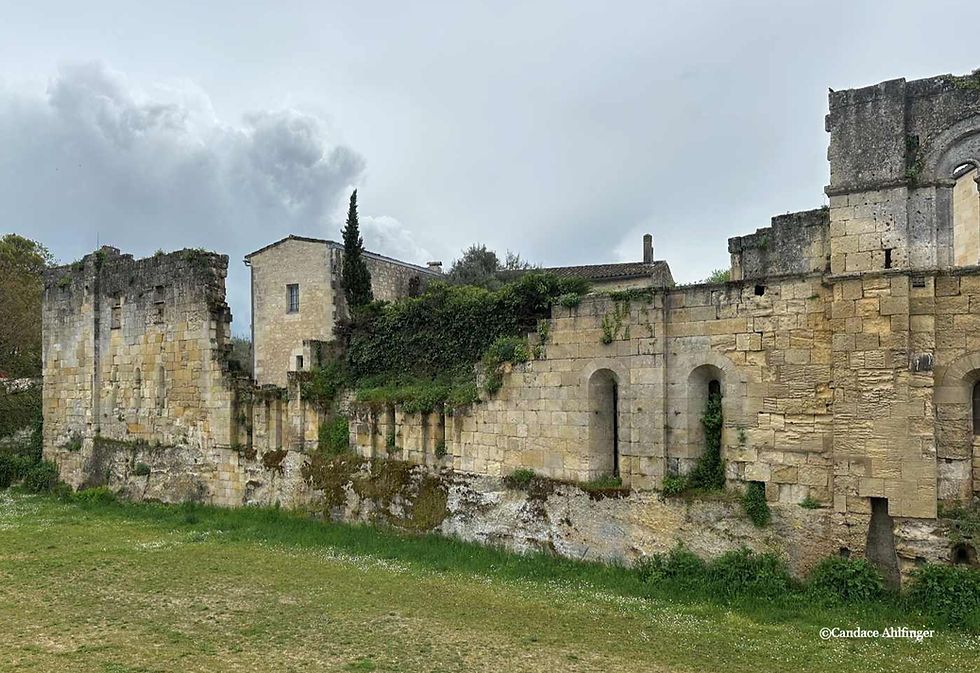A Great Stay in Fez, Morocco
- Candace Ahlfinger
- Apr 17, 2020
- 4 min read

Fes (Fez), established around 800 A.D., is the oldest of Morocco’s four imperial cities--Meknes, Marrakesh and Rabat--all of which have served as the capital of the country. The medina (walled city) has over 9,000 alleyways. Fez is the largest car-free area in world.
The Discovery Tour group had arranged our stay at the beautiful Riad Salam Fes. Riads are multi-storied homes that center around an open-air courtyard with a fountain. All houses have five elements—a fountain, marble floors, cedar carvings, mosaics, and plaster. Many riad hotels, like this one, have incorporated neighboring riads to build a larger facility while maintaining the beautiful features of each one. I would highly recommend a stay in a riad if you are in Fes.
HeSam, a great local guide arranged by Discovery, showed us around Fes. We entered the medina through the Bab Boujloud (intricately tiled blue gate) to get to our first stop, Fes al Bali, the oldest portion of the medina which was built in the 9th century. In this section we visited the Al-Bou Inania madrasa, which was built for teenage students in the 1300s. While we were there, our guide shared stories about the city. In this section is the oldest existing and continually operating university in the world was established in Fes in 859 A.D. The University of Al-Karaquine was founded by a woman and is the first co-ed system in the world. (The mosque she had built on the site held 22,000 worshippers.) There were 14 gates into the university, each leading to a different field of study. The system was built on a sharing, not a lecture, curriculum. Because students came from all over the world, blind persons were used as translators. These translators memorized the lessons and shared them afterwards with others. The use of the blind in this school led to changes throughout the 10,000 alleyways in the medina. Nails were put in the walls to tell them where they were. An accompanying madrasa (school) was built in the 1300s for teenage students. Students could be of any religion, gender, ethnicity, etc. The goal was for students to learn peace instead of simply tolerance. By living together, students could accept differences because differences can be bipolar.
Some thoughts shared by our guide…
“Culture does not have a passport.”
“History is a set of lies agreed upon.” Churchill
Only when we accept differences can we communicate.
Mental constipation leads to verbal diarrhea. Use verbal diarrhea to tell good.
Travel twice and you are a storyteller.
“Empty buckets make the most noise.”
Also in Fes al Bali is the Chouara Tannery, the oldest tannery in Morocco, which has been in existence almost 1,000 years. We don’t generally shop much while we are travelling, but we couldn’t pass up leather jackets. (We didn’t buy a fez which, until fairly recently, could only be made in Fes!) We visited Seffarine Square where copperware craftsmen still demonstrate their handiwork with a cacophony of metallic noises. We also were able to enter the Nejjarine Museum, a collection of wooden crafts kept in a former hotel.

The construction of both the 9th and 14th century portions of the medina were built to withstand earthquakes. The walls are made of carved cedar and carved stucco, which was made of marble dust and egg white.
The Fès el-Jedid (new section of the medina) was built in the 14th century. It houses the Royal Palace, which is great for photo ops only since it isn’t open to the public, the Great Mosque, and the Mellah, or Jewish Quarter. The Jewish Quarter has a large salt market. Jews were welcomed in the predominantly Muslim city. Muhammad V made the statement, “We’ve never had Jews in Morocco. We’ve only had Moroccans.” In Morocco, Jews and Muslims both have the same saints, a further demonstration of the way their lives and religion are intertwined.

Over the years, four types of Jews came: the Berber Jews came with the Phoenicians, Ethiopian Jews, Sephardic Jews from Spain and Portugal, and the Ashkenazi Jews in WWII. Through the years Jews have been persecuted in Morocco, also, but the country has served as a safe haven for many. Muslims supported Jews under French domination. For example, when the French told the Jews that they must cut their pants short to be identified as Jews, Muslims quickly followed suit and cut their pants short in a move of solidarity. (A note…the majority of Jews in Morocco moved to Israel when the new country was established.)
Our visit to the beautifully restored Aben Danan Synagogue in the Mellah was especially educational for us. The synagogue, founded in the 17th century, is an important part of Jewish history in Morocco. We were able to see the Torah ark and the underground mikva, a bath used for ritual cleaning. We were very lucky to have many Jews in our group who were glad to explain the significance of the various parts of the synagogue.
We had only one more night in the beautiful riad before heading out the next morning through the Atlas Mountains for our next adventure!











Comentários